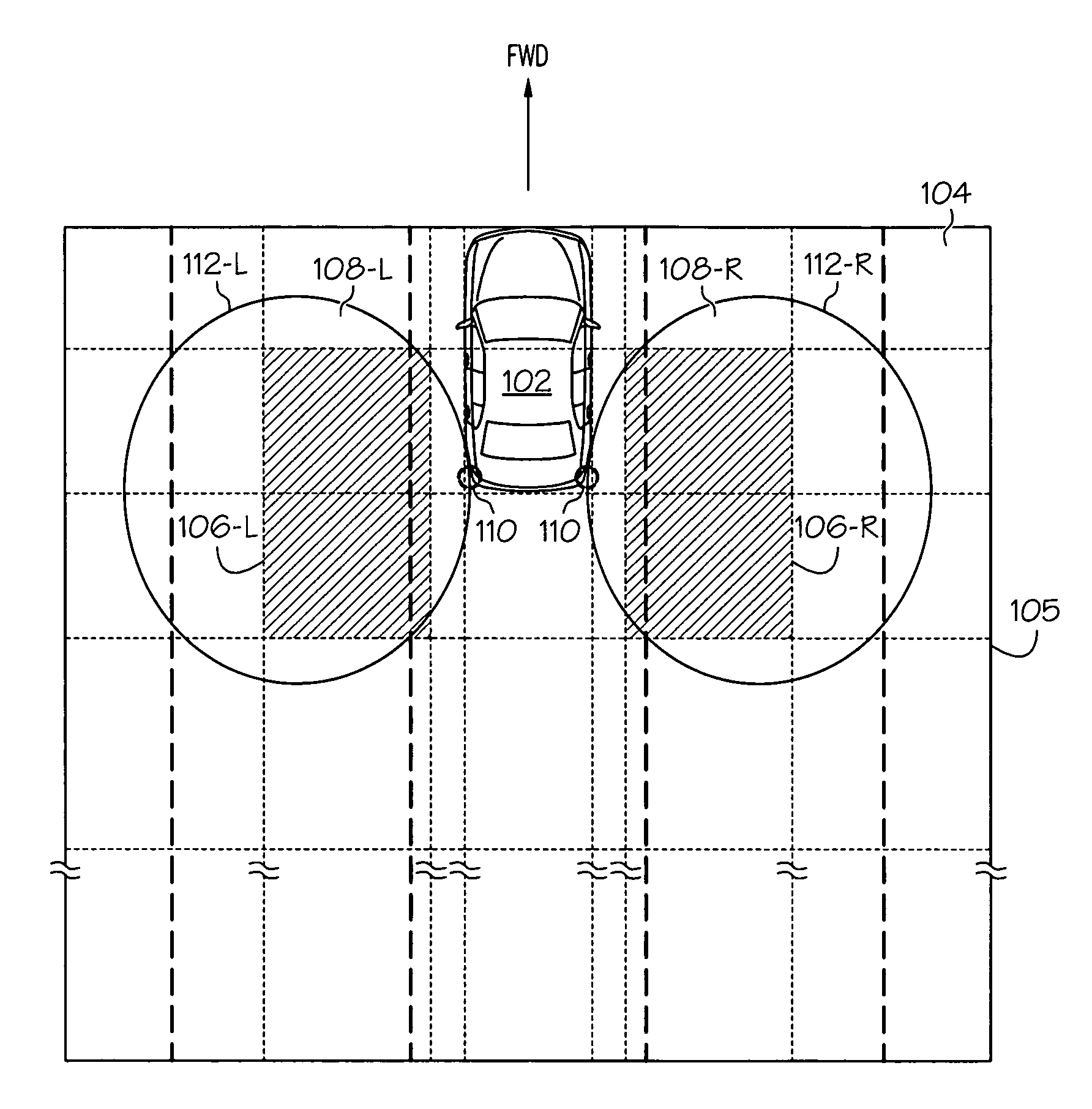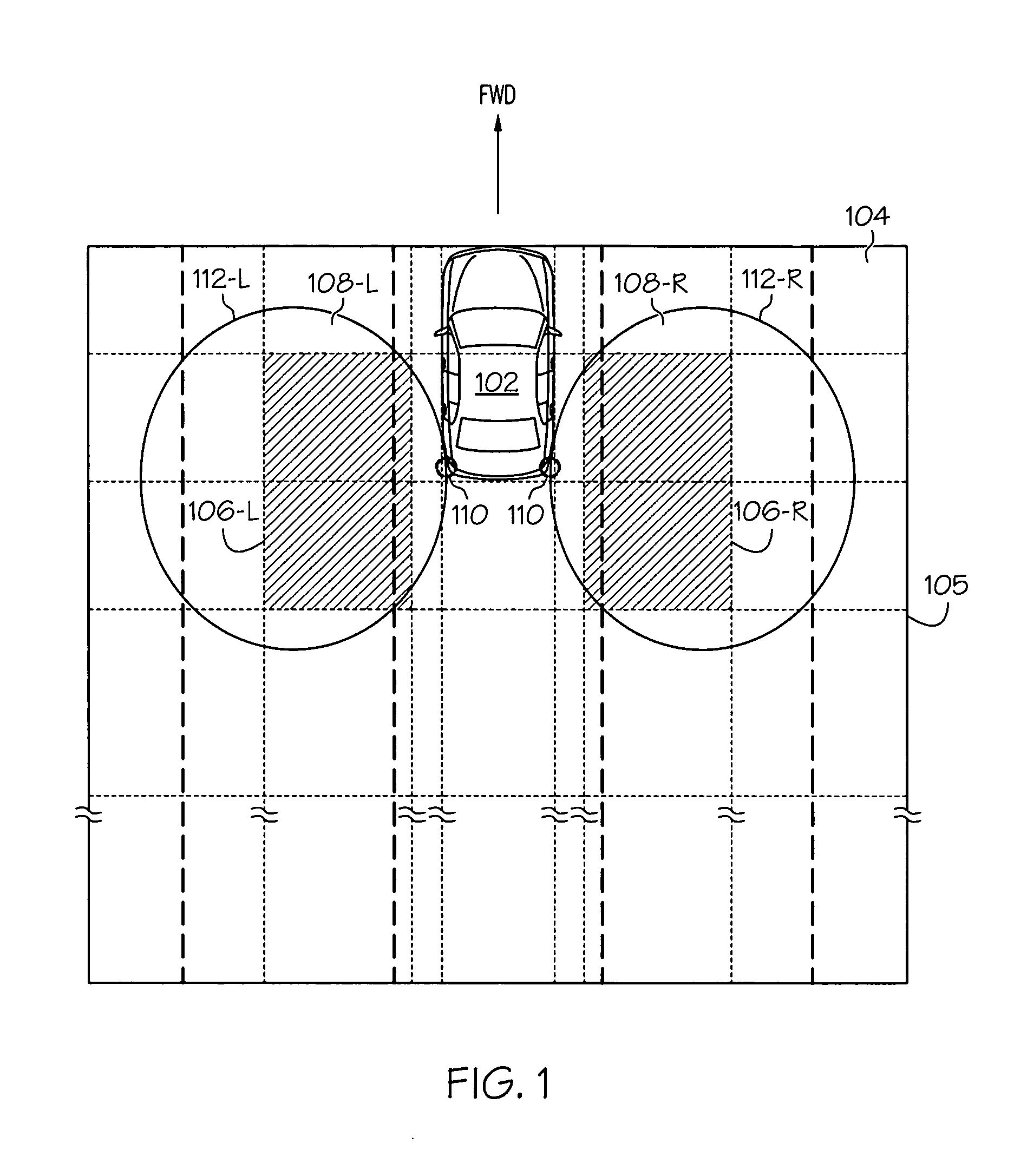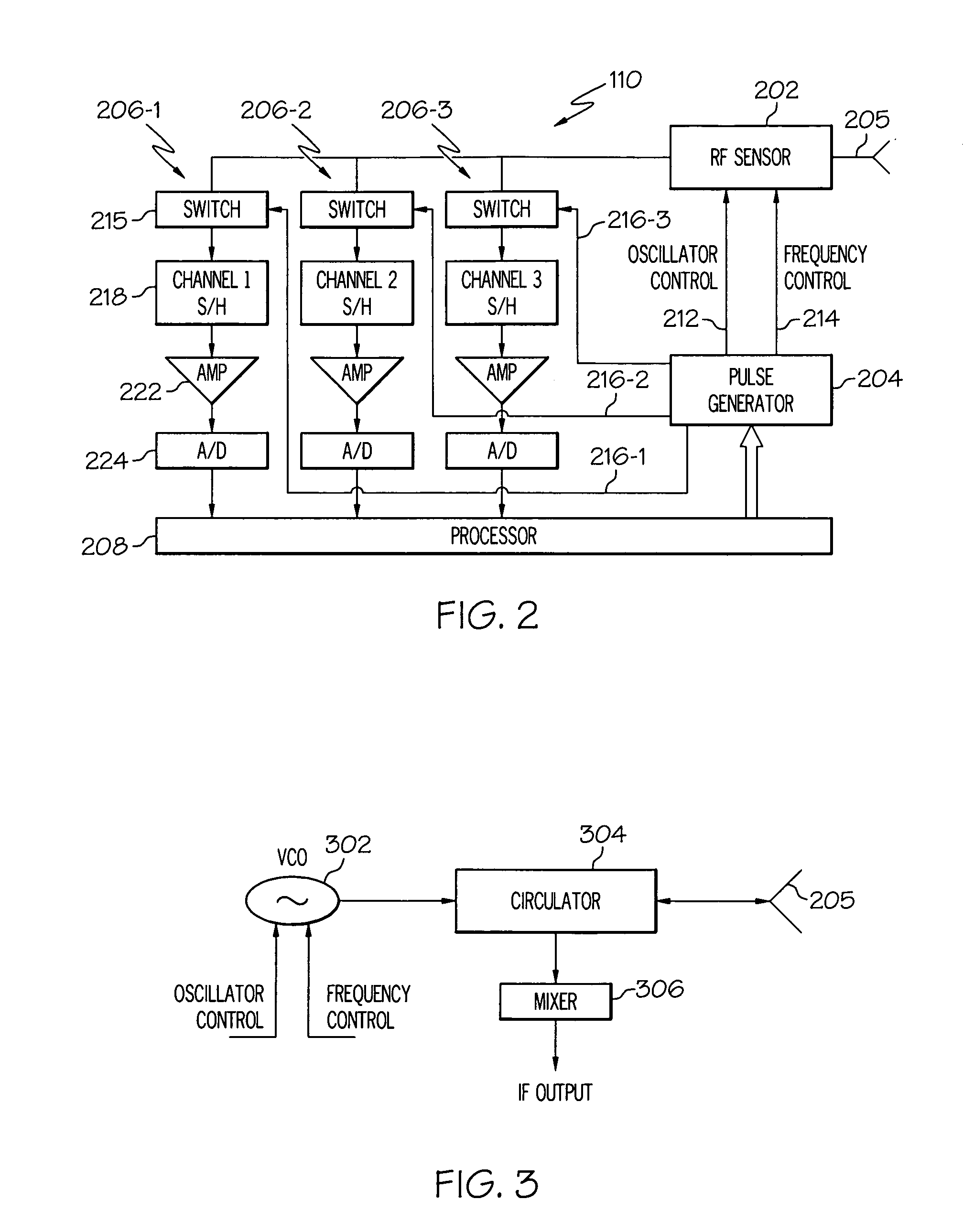Radio frequency proximity sensor and sensor system
a radio frequency proximity and sensor technology, applied in the field of proximity sensors, can solve the problems of reduced effectiveness of mirrors at night, increased likelihood of vehicle incursion, and difficulty for the vehicle operator to see,
- Summary
- Abstract
- Description
- Claims
- Application Information
AI Technical Summary
Benefits of technology
Problems solved by technology
Method used
Image
Examples
Embodiment Construction
[0019]The following detailed description is merely exemplary in nature and is not intended to limit the invention or the application and uses of the invention. Furthermore, there is no intention to be bound by any theory presented in the preceding background or the following detailed description. In this regard, although embodiments of an inventive sensor are described as being implemented in an automobile blind spot detection system, it will be appreciated that the sensor may be implemented in numerous other systems and environments. For example, the sensor may be used to detect the presence of objects near residential, commercial, governmental, or military buildings or other facilities. Moreover, as used herein the term “object” or “objects” may refer to both animate and inanimate objects.
[0020]Referring now to FIG. 1, an exemplary vehicle 102 is depicted on a driving surface 104. Various regions are also graphically depicted in FIG. 1. These regions include a plurality of operato...
PUM
 Login to View More
Login to View More Abstract
Description
Claims
Application Information
 Login to View More
Login to View More - R&D
- Intellectual Property
- Life Sciences
- Materials
- Tech Scout
- Unparalleled Data Quality
- Higher Quality Content
- 60% Fewer Hallucinations
Browse by: Latest US Patents, China's latest patents, Technical Efficacy Thesaurus, Application Domain, Technology Topic, Popular Technical Reports.
© 2025 PatSnap. All rights reserved.Legal|Privacy policy|Modern Slavery Act Transparency Statement|Sitemap|About US| Contact US: help@patsnap.com



